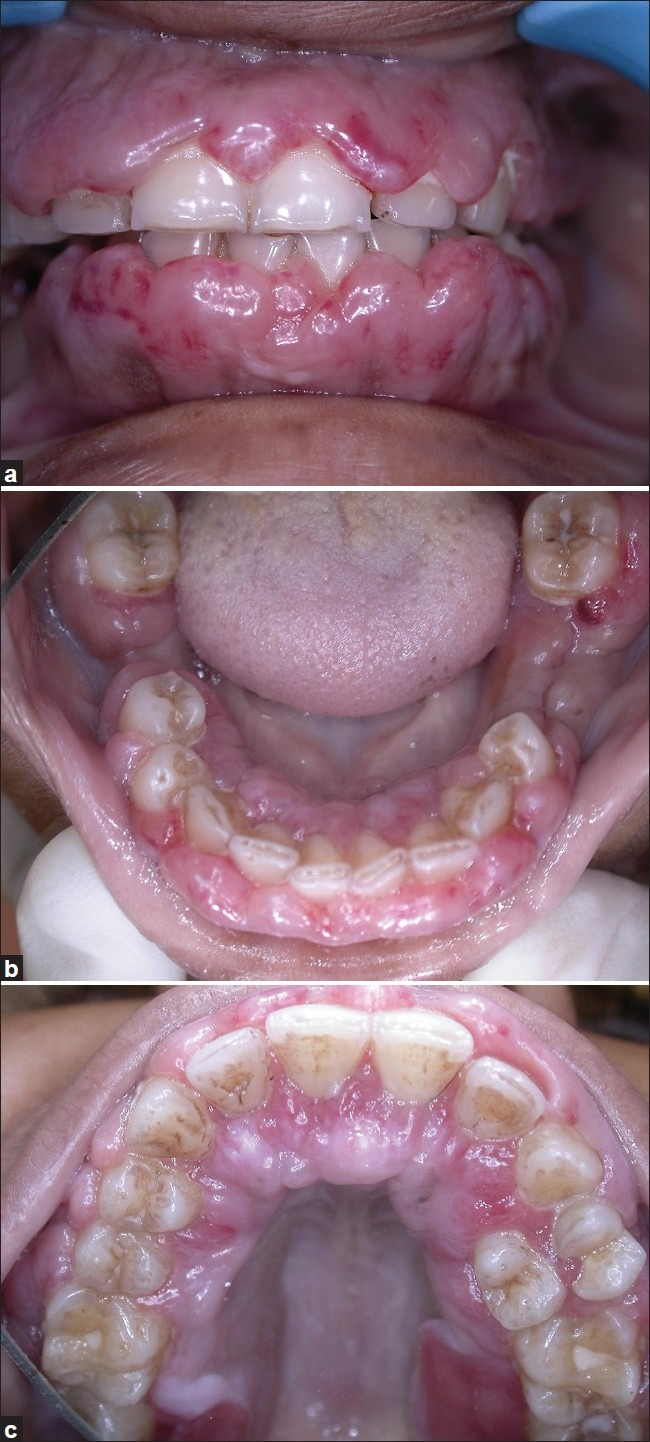
Gingival hypertrophy, manifestation of myelomonocytic leukemia
This article describes the case of a 34-year-old Asian Indian female with myelomonocytic leukemia presenting with gingival hypertrophy. She presented to the Goa Dental College and Hospital on 23rd February 2011, with complaints of bleeding in the maxillary and mandibular gingiva, pain and swelling. The symptoms had been present for 15 days. However, two weeks before the presentation, the patient was in good health. She sought dental treatment when the symptoms grew progressively worse.
Oral examination showed an enlarged gingiva with a smooth, shiny and edematous appearance
There were no signs of stippling. The patient’s medical history revealed that she was also having menstrual irregularities with excessive tiredness since the past 3 months. In addition, there were no signs of lymphadenopathy, hepatosplenomegaly, petechiae and cutaneous bruising. She was not on any medications and had no family history of haematological disease.
For further investigation, doctors advised a routine blood investigation which showed a total leukocyte count of 10,000 cells/cmm and Hemoglobin count of 10 mg/dl. She was initially diagnosed with menstrual cycle associated gingivitis. Doctors advised routine scaling, root planing and pocket irrigation and referred the patient to the Department of Obstetrics and Gynaecology for consultation of her menstrual irregularities. She was given oral androgenic steroids for a period of 3 weeks.
She was recalled after 3 weeks and her menstruation had become regular but the gingival swelling, bleeding, and pain did not show any improvement
This time around the doctors also noted necrosis along the gingival margins of the maxillary and mandibular teeth. She also complained of a 2-day history of fever of 102°F before her follow-up visit. Examination was also consistent with bilaterally palpable lymph nodes in the neck and axillae. Blood tests showed eukocytosis white blood cell (WBC) count, 58,000/cmm and anaemia (HBG 6 g/dl) and suggested the diagnosis of myelomonocytic leukemia which presented with gingival hypertrophy. She was referred to the Department of Medicine where she was given symptomatic and supportive treatment. Oral hygiene instructions included gentle brushing and mouth rinsing with 0.2% chlorohexidine.
Doctors discharged the patient with with a WBC count of 7,500/cmm and hemoglobin 8 gm/dl. Unfortunately, the patient passed away 4 months after presentation of the initial symptoms. Oral manifestations, such as gingival hypertrophy, in patients with leukemia have been described in literature. It can have several causes including poor oral hygiene, serious systemic illnesses, medication and haematological disorders, as in this case.
Source: NCBI



